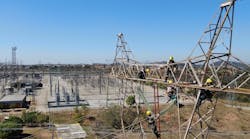While data analytics is nothing new to the electric utility industry, unprecedented amounts of data present the opportunity for cooperatives to create ever more value for their members. By better understanding patterns of energy use, cooperatives can serve members more efficiently and cost-effectively.
Teams consisting of employees from Great River Energy and its member cooperatives have embarked on demonstration projects to improve the efficiency of distribution systems and discover new ways to serve members using data.
“These member-driven projects were initiated with the condition they could be repeated and seamlessly integrated to other member cooperatives,” said Nate Grahl, Great River Energy principal data analyst.
To assess financial health, cooperatives rely on their annual Key Ratio Trend Analysis (KRTA) report published by the National Rural Utilities Cooperative Finance Corporation. It provides a complete picture of their system’s financial performance, but there is a lengthy delay before results are available.
Looking for a more current view of this information, Great River Energy and Steele-Waseca Cooperative Electric (SWCE) partnered to build a platform that would allow a real-time calculation of 12 of the 144 metrics provided to SWCE through the KRTA report.
According to SWCE General Manager Syd Briggs, the project was successful.
“Before, I could only see the numbers in a spreadsheet. The new displays make it easy for me to track my ratios on a graph. It makes a big difference,” Briggs said. “I can compare my co-op performance month over month for a specific time period. I can easily watch trends and if I notice a change, I can dig deeper. It keeps me informed.”
Verifying Program Value
A meter data management system (MDMS) and advanced metering infrastructure (AMI) demonstration study with Minnesota Valley Electric Cooperative (MVEC), of Jordan, Minn., and Lake Region Electric Cooperative, of Pelican Rapids, Minn., attempted to research the assumption that for every cycled air conditioning (AC) unit, the load is reduced by 1 kilowatt (kW) at the peak. Using data from a group of homes on a cycled AC program and a control group of similar homes, the difference between hourly load profiles during the time AC units were cycled were analyzed.
“To achieve better cycled AC results, our member cooperatives need to be able to break down consumers by usage type to identify who has the greatest potential to reduce loads for cycled AC programs to be more efficient,” Grahl said.
In addition, using current AMI and MDMS technology, the team will quantify and seek to reduce energy losses from the substation all the way to the end-use customer. Initial work in this on-going project was to establish methodology to directly measure energy losses at the substation level and to document what additional information will be required to next measure losses at the substation feeder level.
The full GRE press release is available at this link.


